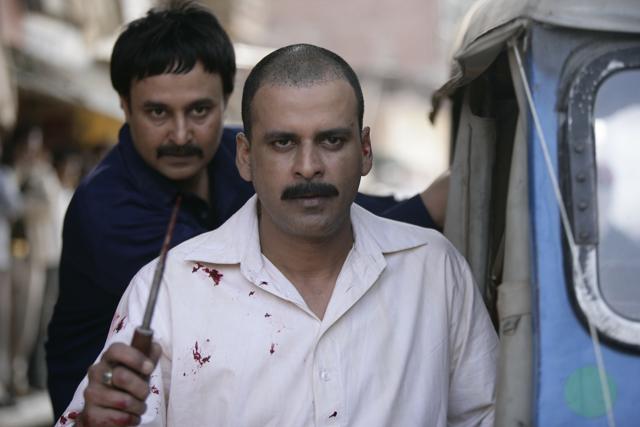Can we talk about the glaring classism in Shah Rukh Khan-Aryan Khan’s Hindi Lion King?
While the ‘hero’ in the Hindi Lion King, Simba, sounds like a SoBo kid (perhaps because he’s played by Shah Rukh’s son, Aryan), the homophobic hyena henchmen sound like Bihari hoodlums.
Beneath the admirable gloss of The Lion King remake, there is an undercurrent of internalised classism. While Disney India has done an excellent job of translating the new Hollywood spectacle for local audiences – even the songs have been redone, and Shah Rukh Khan is fantastic as Mufasa -- but certain background characters demand a closer inspection.

While the ‘hero’ in the Hindi version, Simba, sounds like a SoBo kid (perhaps because he’s played by Shah Rukh’s son, Aryan), the homophobic hyena henchmen sound, very deliberately, like Bihari hoodlums. This sticks out despite being rather commonplace in our industry, which more often than not seeks the familiarity of stereotypes, regardless of whether or not they are outdated. The impact of such characterisations might not be easily quantifiable, but for children hearing a king who sounds like Bollywood royalty, and goons who sound like they belong to a very real, not-so-privileged place in India, certainly has its implications.

In his 2005 book, Maximum City, writer Suketu Mehta described Bihar as the ‘disaster’ of modern India. Recounting an anecdote about how a man from Azamgarh in Uttar Pradesh – a famously violent city – made the gross generalization that ‘all Biharis are thieves’, Mehta wrote, “Bihar has an even worse reputation than Uttar Pradesh. Bihar and Bombay are the two polarities of modern India, the success story and the disaster.”
This anti-Bihar sentiment was encouraged, especially in Mumbai, by Shiv Sena supremo Bal Thackeray and subsequently his nephew, MNS chief Raj Thackeray, who said in an interview to the Times of India in 2008, “The message has to go to Bihar that there is no space left in Mumbai for you.” Balasaheb, as he was also known, had controversially written an editorial titled, Ek Bihari Sau Bimari (Each Bihari brings a hundred illnesses).
Both Thackerays have been accused of inciting violence against migrants, particularly those from Bihar and neighbouring Uttar Pradesh. This xenophobia is one of the reasons why the word ‘bhaiya’ has taken on such derogatory undertones, especially in Maharashtra, the state that houses the Hindi film industry. In the Lion King, the hyenas are even described as ‘Chhapris’ in one scene. Imagine my shock at hearing what is essentially a rough equivalent of the British slur ‘Paki’, in a Disney movie.
It should be made clear, though, that this problem isn’t specific to India, but has happened (and justly criticised) even in Hollywood. The classic animated film Dumbo made a school of crows sound like black people, and named one of them Jim Crow after the dastardly segregation laws. But that was in 1941. More recently, however, the simpleton Mater in the Cars movies was voiced by the comedian Larry the Cable Guy, known for his ‘hillbilly’ humour. And who can forget the ‘jive-talking’ robots in the second Transformers film?
Now compare this with director Jon Favreau’s legitimately sensitive casting in the original English version, which honours the African setting of the story by bringing in a fine group of black actors, led by Donald Glover and Beyonce. The most prominent white performers in the cast – Billy Eichner, as Timon and Seth Rogen as Pumba – sound exactly like themselves, and aren’t putting on some racist white man voice.
Bihar’s post-liberalisation troubles began in the ‘90s, when it seemed as if the universe was conspiring to impede its economic growth. The damage that wasn’t done by rampant lawlessness was completed by yearly flooding of the river Kosi, also known as the ‘Sorrow of Bihar’. The state’s per-capita income dropped to a third of the national average. Bihar has changed since then, but its depiction in films hasn’t.

This poor reputation was aided in no small part by how Bihari characters are portrayed in mainstream Bollywood movies, which is perhaps why the people behind the Hindi dub subconsciously played into these stereotypes. For all its merits – and there are many – Anurag Kashyap’s Gangs of Wasseypur films have been hugely influential, in every sense of the word. And in a country that often finds it difficult to distinguish between films and reality, this is concerning.
But things seem to be on the mend. If we can blame Bollywood for inflicting damage, as we do the politicians, we can expect it to undo some of it as well. Super 30, co-produced by Kashyap’s now defunct shingle Phantom Films, celebrates a Bihari mathematician’s contribution to his people, and in a major diversion for Bollywood, his intellect.
Animation offers the rare opportunity for films to exercise race-blind casting. S it’s sad to see the same film occupying opposite ends of the spectrum on this debate.
Follow @htshowbiz for more
The author tweets @RohanNaahar






